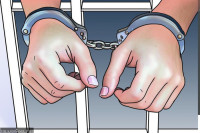National
High schools are setting their own entrance criteria, in direct contradiction to government regulations
The government had mandated minimum grades for specific courses, but private schools have set higher standards to even sit for the entrance exam.
Binod Ghimire
Nishan Gautam recently sat for his Secondary Education Examinations from a private school in Katari in Udaypur. He passed with 2.6 Grade Point Average (GPA). While the results weren’t what he’d expected, he convinced himself that he still had grades 11 and 12 to prove his potential.
Gautam left his hometown and came to the Capital hoping to study at Prasadi Academy in Lalitpur. But to his dismay, the school refused him a chance to even sit for the entrance exams, saying he needed a minimum GPA of 3.5 to qualify for the test.
“The response from the school was a disappointment to him,” Som Pahadi, Gautam’s brother-in law, told the Post. “Don’t these schools need to follow the law of the land?”
Any student who gets a minimum 2.0 GPA and a C+ in Mathematics and Science is eligible to study science in grade 11, according to the government's criteria. For those who want to study management or humanities, the requirements are a 1.6 GPA and a D+ in subjects related to their respective courses.
However, despite the government’s regulations, many schools have been setting their own qualification standards, barring students from even sitting for the entrance examinations. A majority of the more exclusive private schools have set a minimum 3.0 GPA for science and 2.4 for management and humanities.
Students like Gautam believe this is unfair. Not allowing students to take the entrance exams is injustice, said Pahadi.
Parents and guardians say that it is illegal to deny students who have obtained the minimum grades as mandated by the government from studying the courses of their choice.
Suprabhat Bhandari, coordinator of the Nepal Guardians’ Federation, said that private schools need to put an end to this monopoly or the government must step in to ensure that its rules are followed.
“We condemn such defiance and demand that the government allow all students with the minimum qualifications to study in the institutions of their choice,” Bhandari told the Post.
Alongside Prasadi, parents and guardians named St Xavier’s, Pentagon, Capital College and Research Centre, Global College of Management, Himalayan White House and Bridgewater among the schools that had set their own minimum standards.
School officials, however, said that they were complying with the government’s rules.
“We had set our minimum standards three years ago, but we are ready to review it if necessary,” said Bikram Rai, principal of Prasadi Academy.
Lok Bahadur Bhandari, general secretary of the Higher Institutions and Secondary Schools' Association Nepal, an umbrella body of high schools, agreed that no eligible students should be turned away.
“Every student with the required GPA should be allowed to take the entrance exams at the schools of their choice,” he told the Post.
Education experts say that as high school has been integrated into the school system, the debate should focus more on allowing students to study grades 11 and 12 without any entrance exams. Three years ago, through the eighth amendment to the Education Act, the government had brought the higher secondary level into the school system. However, students still need to sit for the SEE after their grade 10 and take entrance exams at various schools offering grades 11 and 12.
But according to the Education Act, passing grade 10 and 11 should be the same as passing from grade 8 to 9.
“The entrance exam is nothing but an opportunity for schools to make money,” said Basudev Kafle, a professor at Tribhuvan University who has extensively researched school education in Nepal. Kafle believes that setting up new criteria to join grade 11 and asking students to sit for entrance exams is illegal and can be challenged in court.




 10.12°C Kathmandu
10.12°C Kathmandu















